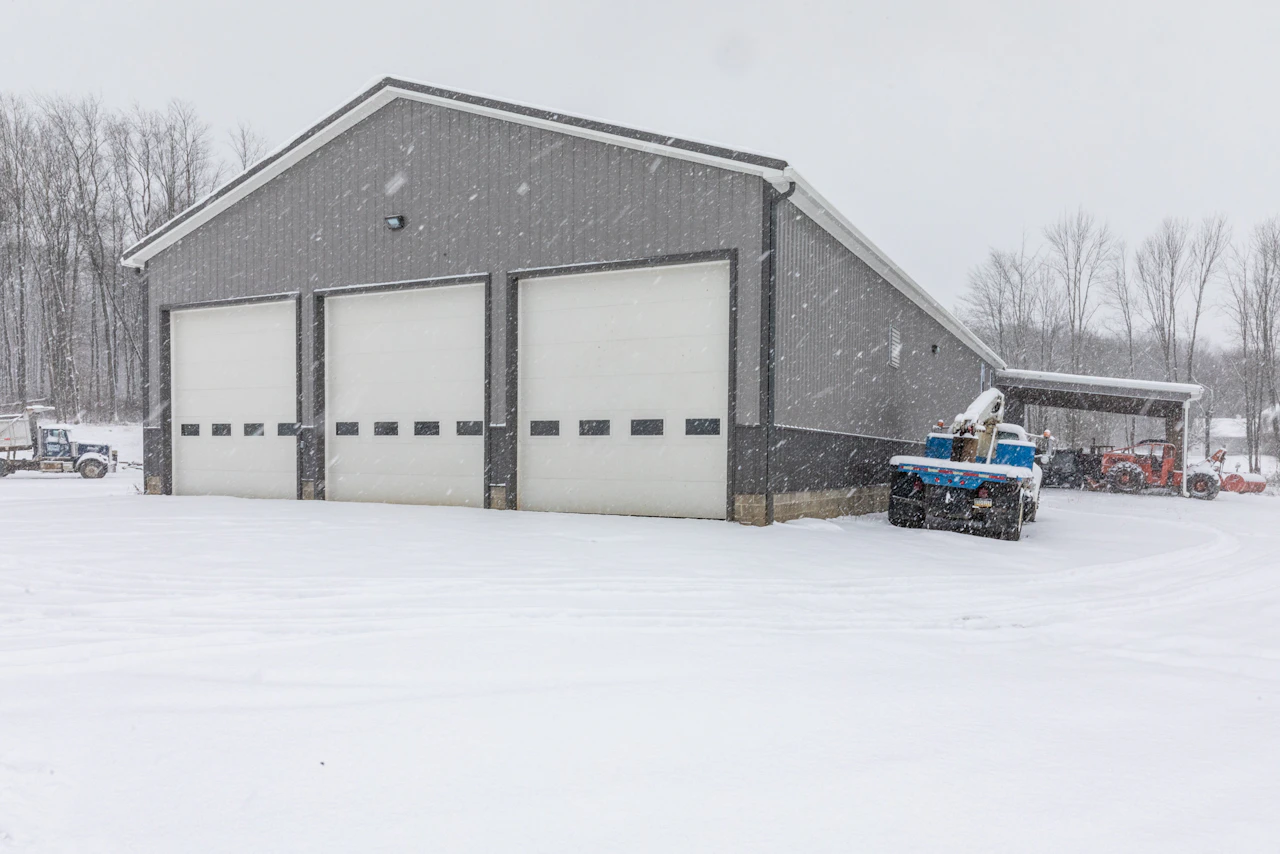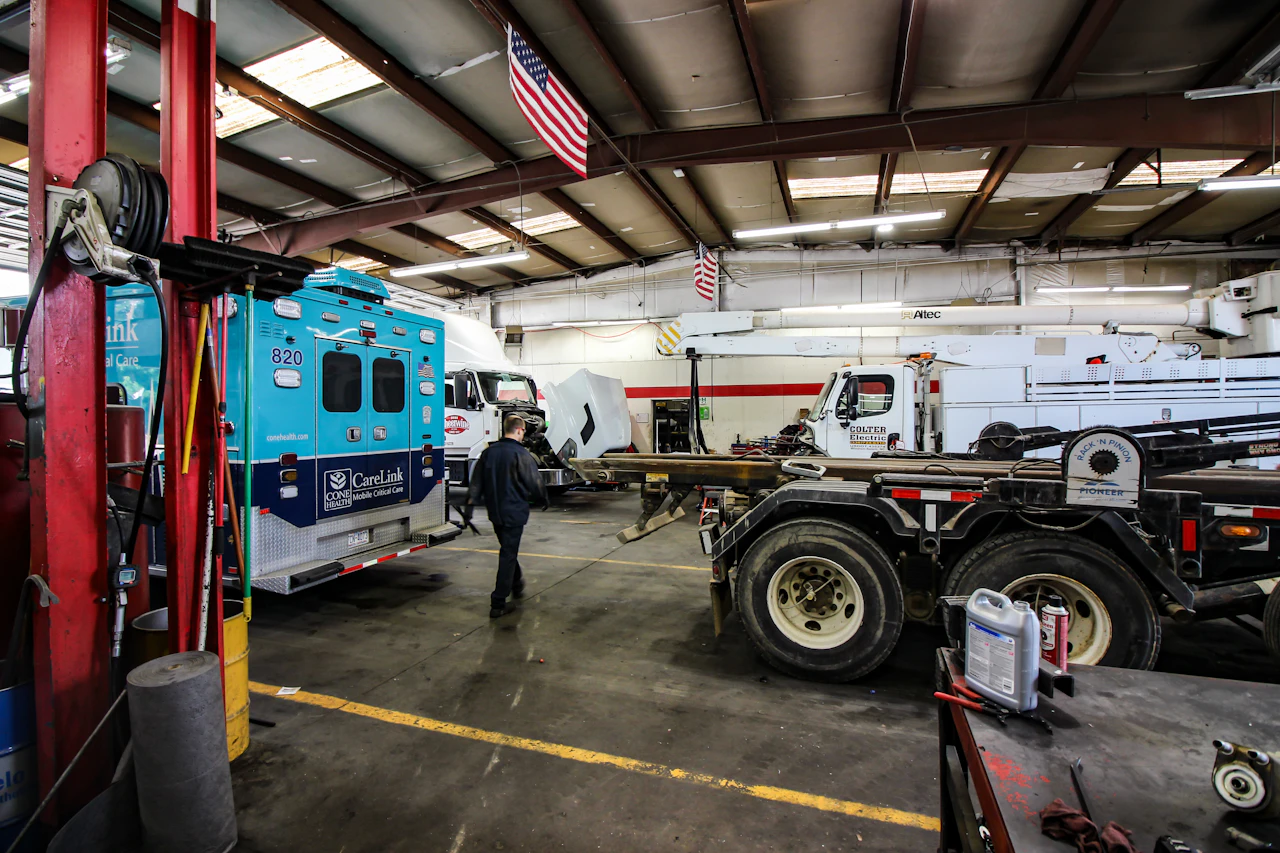Trucking is considered a high-risk career with many hazards, thus the FMCSA and DOT require specific safety equipment for commercial motor vehicles to ensure safety. All commercial vehicles must have emergency trucking equipment, (except those being towed in a driveway), as per FMCSA regulations. Here is a list of the essentials:
Fire Extinguisher
A fire extinguisher is a crucial safety tool that all heavy-duty trucks must have on board to meet FMCSA regulations. Drivers must be equipped with a suitable fire extinguisher in case of an outbreak of fire in the workplace. The fire extinguisher must be approved by OSHA, inspected, and maintained annually to ensure it's in good working order. It must be readily accessible and properly secured in the vehicle to prevent movement.
For commercial trucks carrying hazardous materials, a fire extinguisher with a minimum 10 B:C rating is required, while trucks not transporting hazardous chemicals must have either an extinguisher rated 5 B:C or above or two extinguishers rated 4 B:C or higher.
In compliance with FMCSA standards, every heavy-duty truck in the US must be equipped with a portable fire extinguisher. This should be a 10-B:C unit for trucks transporting hazardous materials and a 5-B:C unit for all other vehicles. Failure to have a fire extinguisher on board will violate FMCSA regulations. The fire extinguisher must be securely anchored to prevent movement and be designed to not freeze.
Extra Fuses
As a commercial truck driver, it's important to always be prepared for any potential equipment malfunctions while on the road. One simple way to ensure this is to carry an extra fuse for each type and size required for the vehicles you operate. This is especially crucial for vehicles that are equipped with various types of equipment and accessories that rely on fuses to function properly. By having an extra fuse on hand, you can quickly and easily replace a blown fuse and get back on the road without any delays.
Warning Devices
There may be times when you need to pull over on the side of the road unexpectedly. This can be a dangerous situation, especially if your vehicle has experienced mechanical problems and you are unable to relocate it to a safer spot. To help alert other drivers and minimize the risk of accidents, the FMCSA requires that truck drivers carry at least one of the following warning devices:
- Three emergency reflecting triangles that meet the standards of FMVSS 571.125 and are bidirectional.
- Three liquid-burning flares or a minimum of six fuses, which must be installed on the vehicle to comply with 392.22.
It's important to note that extra warning devices used by drivers cannot take the place of the mandatory warning devices required by the FMCSA. By carrying one of these devices, you can help ensure your safety and the safety of others while you're parked on the side of the road.
Emergency Kit
It's important to always be prepared for any potential emergencies on the road. Carrying extra safety gear, such as emergency reflective triangles, fuses, and fire extinguishers is essential to ensure your safety and the safety of others.
According to FMCSA regulations, all heavy-duty trucks that are required to stop due to accidents, breakdowns, or emergencies must have clear warning signs. Although road flares are often kept in the safety packs of regular drivers, truckers typically carry emergency reflective triangles. To meet the minimum standards set by the FMCSA, truck drivers must have at least three bidirectional emergency reflective triangles in their emergency kit.
By carrying these essential items, you can help ensure that you're prepared for any unexpected situation on the road.
Medical Kit
Truck drivers must be prepared for any situation while on the road and having a first aid kit is an important part of being prepared. Even though the Federal Motor Carrier Safety Administration (FMCSA) doesn't legally mandate drivers to carry first aid kits, it's still advisable to have one. Some states may have specific requirements regarding the contents of first aid kits, so it's important to check local regulations.
It's important to make sure that the first aid kit is fully stocked and that its contents are regularly inspected or replaced after use. The size of the first aid kit should be appropriate for the maximum number of people that may be in the truck at any given time. By carrying a well-stocked first aid kit and other safety equipment, truck drivers can better ensure their own safety and the safety of their passengers in case of an emergency.
Security Vest
It's important for truck drivers to be visible and safe while on the road. One way to achieve this is by wearing a high-visibility safety vest in the cab of the truck. This vest should be bright and easily noticeable, typically in a neon color, with multiple retro-reflective stripes. These features make the driver more visible to other drivers and can help reduce the risk of accidents or injury. Drivers can improve their visibility and stay safer on the road by wearing a safety vest.
Tools
The job of a truck driver often requires dealing with unexpected challenges on the road, and being prepared with the right gear can make all the difference. By having the necessary tools in their truck, drivers can handle a range of situations with confidence and efficiency, whether it's fixing a flat tire, performing routine maintenance, or navigating adverse weather conditions.
Wheel Chocks
Wheel chocks play a crucial role in preventing heavy-duty trucks from moving while parked or during loading and unloading. These are standard components of every commercial motor vehicle. To ensure stability, it is recommended to use wheel chocks on both sides of the tires when parking on flat surfaces or when the rear tires are facing a slope.
Final words
As a trucker, it's crucial to invest in emergency roadside equipment to make your job easier and safer. Having these essential items on hand will help you tackle any challenges that may arise while on the road and allow you to concentrate on the task at hand. It's a smart investment that will pay off in the long run, making your life as a trucker more secure and efficient.

